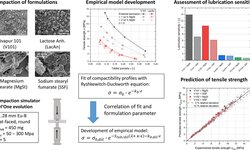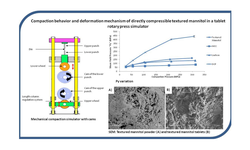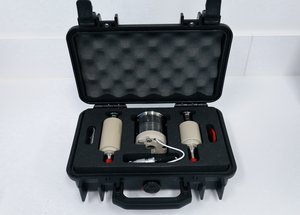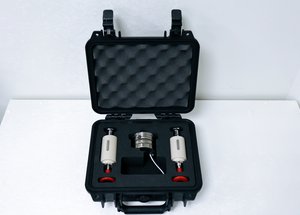Scientific papers
Mannitol serves as a commonly utilized pharmaceutical excipient in tablet formulations, a prevalent oral dosage form for drug delivery. For tableting purposes, mannitol is available in two distinct forms: native crystals and textured particles. To enhance formulation optimization, a comprehensive understanding of the mechanical behavior mechanism of mannitol is imperative. This study aims to assess the deformation mechanism of native mannitol crystals with varying particle sizes. Pharmaco-technical and compression studies were conducted using mannitol with mean diameters of 160 µm, 50 µm, and 25 µm. Brittle lactose (monohydrate) and plastic microcrystalline cellulose were employed as reference materials. Tableting tests and mathematical models, including HECKEL and WALKER, were employed to scrutinize the deformation mechanism of mannitol (β). Mean Yield Pressure (Py) and WALKER coefficient (W) values indicated that the studied crystalline mannitol exhibits a deformation mechanism akin to brittle materials. A particle-size analyzer, under different pulverization pressures, demonstrated the heightened sensitivity of mannitol particles to fragmentation, particularly for those with a size of 160 µm. Scanning Electron Microscopy (SEM) was utilized to depict the fragmentation subsequent to high-pressure measurements.
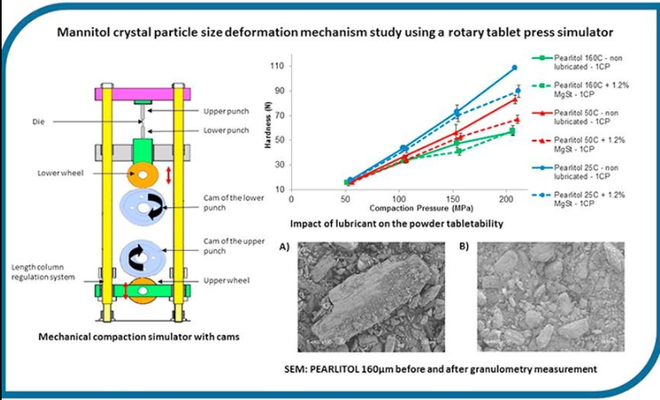
Comments
No comments posted yet.
Add a comment

